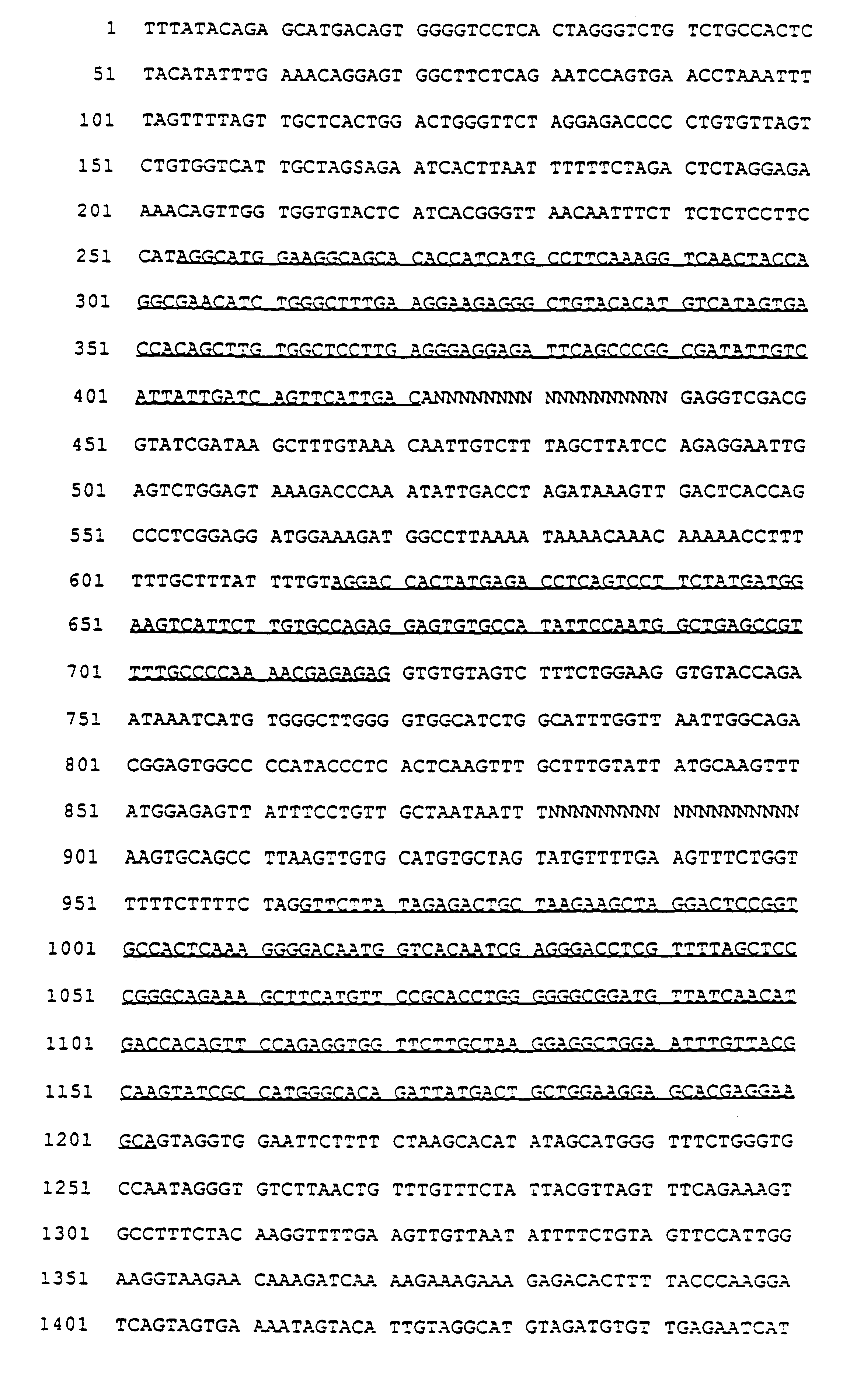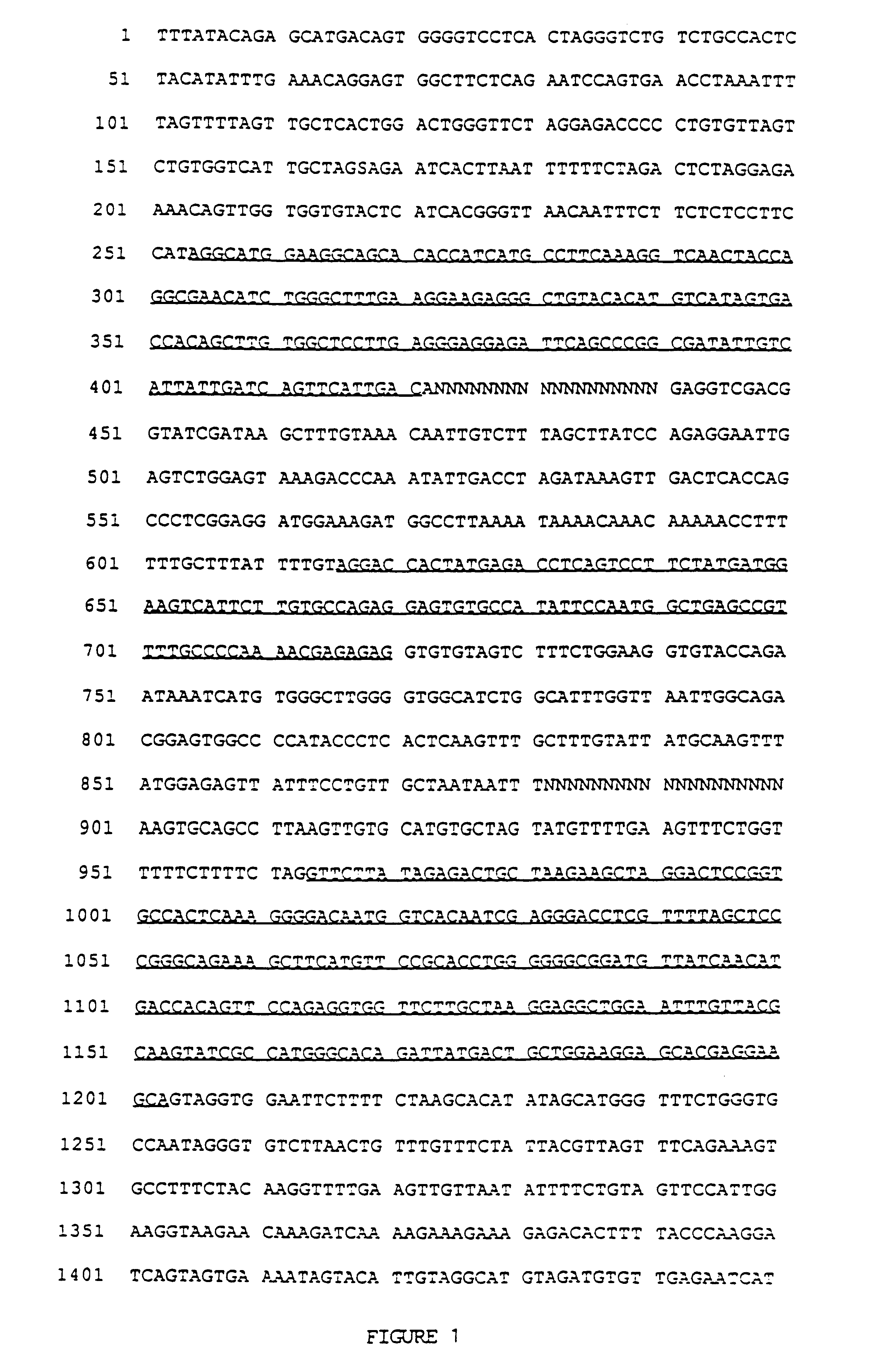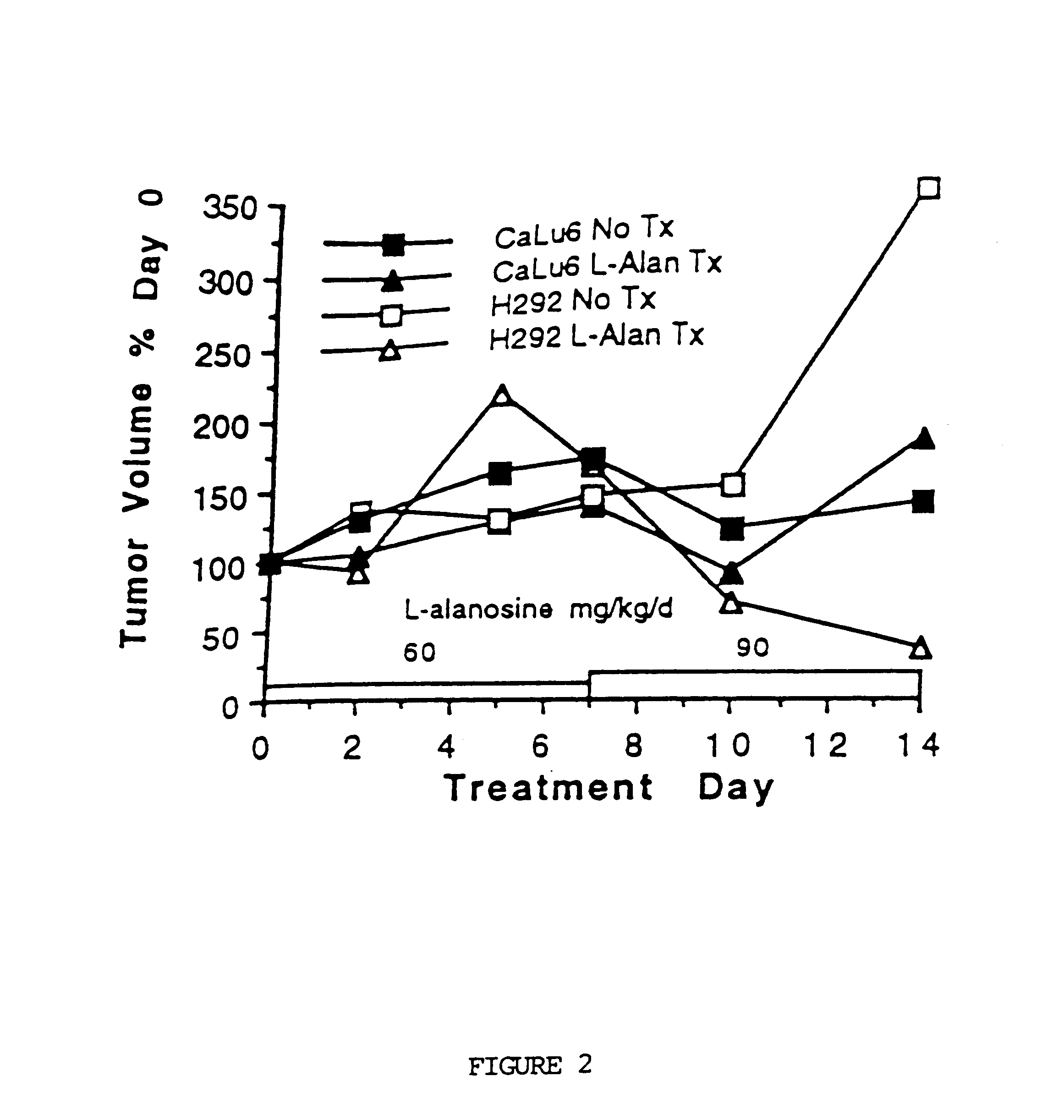Method for inhibiting adenylosuccinate synthetase activity in malignant methylthioadenosine phosphorylase deficient cells
a technology of methylthioadenosine and adenylosuccinate, which is applied in the direction of transferases, instruments, enzymology, etc., can solve the problems of human toxicity of hadacidin more than l-alanosine, inability to inhibit the activity of adenylosuccinate synthetase in malignant methylthioadenosine phosphorylase deficient cells, and inability to inhibit the activity of had
- Summary
- Abstract
- Description
- Claims
- Application Information
AI Technical Summary
Benefits of technology
Problems solved by technology
Method used
Image
Examples
example i
In vivo Effect of L-Alanosine on MTAse Deficient and MTAse Competent Human Tumor Xenografts After Continuous Infusion
To evaluate the in vivo effect of L-alanosine on known human MTAse deficient tumors after continuous infusion, and to compare that effect to the drug's effect on known human MTAse competent tumors, 2.times.10.sup.6 MTAse deficient H292 NSCLC cells and MTAse competent Calu-6 tumor cells (in 0.3 ml with 50% MATRIGEL.TM. carrier), were injected into the right and left flank, respectively, of 8 Balb / C athymic nude mice. MATRIGEL.TM. initially forms a solid matrix in vivo that was measured in each mouse on the first day of infusion for a control tumor size (which is resorbed over a 14-day period). For further comparison, 10.sup.7 CEM T-ALL (MTAse deficient acute lymphoblastic leukemia) cells in 50% MATRIGEL.TM. carrier were injected into the right flank of 8 other nude mice. Many of the cells were obtained from commercially available cell lines from the ATCC sold under, re...
example ii
Protection of MTAse Competent Healthy Cells with MTAse Substrates
The selective inability of MTAse deficient NSCLC cells to proliferate in the presence of L-alanosine (at 40 .mu.M) despite the addition to each culture of the MTAse substrate methylthioadenosine(MTA) was confirmed in a comparison of two cell lines, MTAse competent Calu-6 and MTAse deficient H292 (FIG. 4). Control cultures containing adenine (tAde) proliferate despite L-alanosine, confirming that the selective toxicity is due to a failure of MTAse-deficient cells to metabolize MTA to adenine.
For further comparison, the addition of MTA or the MTA substrate analogue 5'-deoxyadenosine resulted in growth restoration only for MTAse competent A427 cells and MOLT-4 cells, whereas MTAse deficient A549 and CEM cells remained growth inhibited (FIGS. 5A and B). Because MTA is a feedback inhibitor of spermine synthetase, some cell lines such as MOLT-4 are inhibited by high concentrations. This results in a biphasic growth restorati...
example iii
Cloning and Partial Characterization of the MTAse Genomic Clone
A genomic clone of human MTAse was isolated as follows. A cosmid gene library constructed from human placenta DNA (Clontech) was screened using MTAse cDNA gene probe, the Not I / EcoRi fragment from subclone MTAP-7. Transformed E. coli cells from the library are plated on LB plates containing ampicillin (50 mg / l) with a colony density of 1-2.times.10.sup.4 / 135.times.15 mm plate.
The following procedures were performed. From half a million colonies, a single positive colony designated as MTAP-10 was isolated and partially characterized by PCR analysis and by direct sequencing. Two primers, a sense oligonucleotide located 120 bp upstream of the stop codon and an anti-sense oligonucleotide located 20 bp downstream of the stop codon were synthesized and used for PCR analysis. PCR was performed for 25 cycles, each cycle consisting of denaturation (92.degree. C., 1 min) annealing (55.degree. C., 2 min) and extension (72.degree. ...
PUM
| Property | Measurement | Unit |
|---|---|---|
| colony density | aaaaa | aaaaa |
| diameter | aaaaa | aaaaa |
| concentrations | aaaaa | aaaaa |
Abstract
Description
Claims
Application Information
 Login to View More
Login to View More - R&D
- Intellectual Property
- Life Sciences
- Materials
- Tech Scout
- Unparalleled Data Quality
- Higher Quality Content
- 60% Fewer Hallucinations
Browse by: Latest US Patents, China's latest patents, Technical Efficacy Thesaurus, Application Domain, Technology Topic, Popular Technical Reports.
© 2025 PatSnap. All rights reserved.Legal|Privacy policy|Modern Slavery Act Transparency Statement|Sitemap|About US| Contact US: help@patsnap.com



